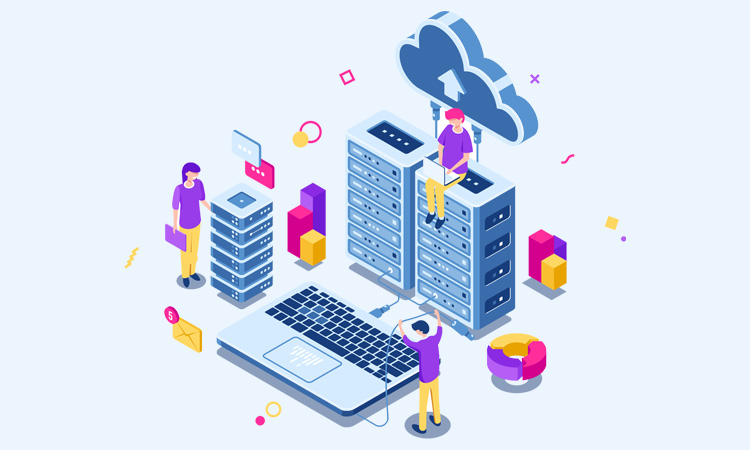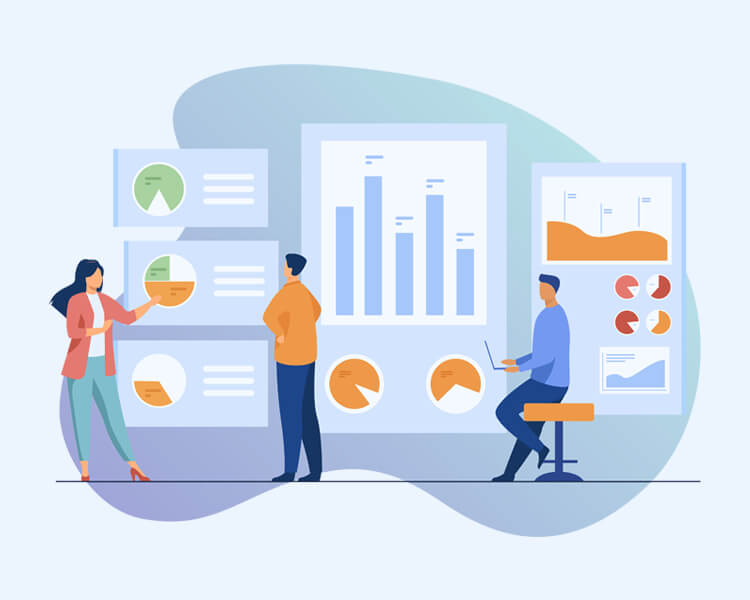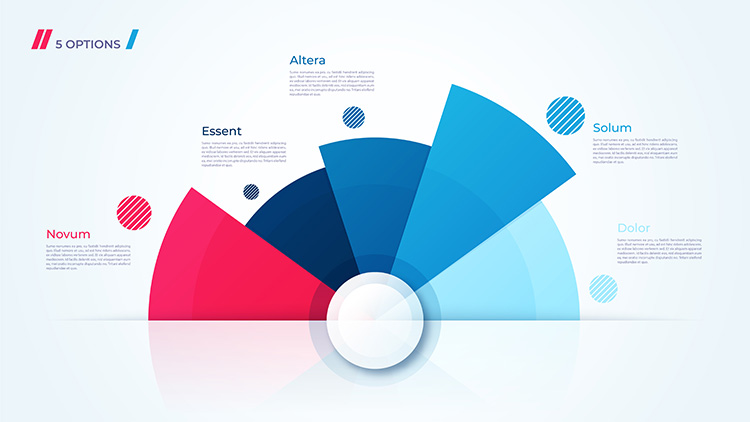AI & ML DevelopmentAbout this Services
Improve Machine Learning algorithms by studying underfitting, overfitting, training, validation, n-fold cross validation, testing, and how hyperparameters could improve performance. Perform linear and logistic regressions in Python.
1. Industrial Automation Software and Services
1.1 Supervisory Control and Data Acquisition (SCADA)
- A system that monitors and controls industrial processes and infrastructure from a central location, providing real-time data collection, monitoring, and automation.
1.2 Distributed Control System (DCS)
- A control system where control elements are distributed throughout the system, allowing for decentralized control and automation in large industrial plants.
1.3 Programmable Logic Controllers (PLC)
- Hardware and software used for automating industrial processes, programmed to control machines and systems with high precision and reliability.
1.4 Human-Machine Interface (HMI) Software
- A user interface that connects operators to machines, allowing them to interact with and monitor industrial processes in real-time.
1.5 Manufacturing Execution Systems (MES)
- Software that controls, monitors, and tracks production on the factory floor, bridging the gap between enterprise systems and production equipment.
1.6 Industrial Internet of Things (IIoT) Solutions
- IoT platforms for connecting, monitoring, and analyzing data from industrial machinery and devices to optimize performance and predictive maintenance.
1.7 Robotics and Automation Software
- Software solutions for controlling robotic arms, conveyors, and automated guided vehicles (AGVs), enabling automation of material handling and manufacturing.
1.8 Simulation Software
- Tools used to simulate industrial processes, production lines, and control systems to optimize design, planning, and efficiency before actual deployment.
1.9 Data Analytics for Industrial Automation
- Advanced analytics platforms that collect and process data from industrial systems to improve operational efficiency, predict machine failures, and enhance productivity.
1.10 Cloud-Based Industrial Automation
- Automation solutions hosted on cloud platforms, enabling remote monitoring, data storage, analytics, and machine learning-driven optimization.
1.11 Energy Management Systems (EMS)
- Software for monitoring and optimizing the use of energy in industrial environments, reducing energy consumption and improving sustainability.
2. Industrial Automation Technologies
2.1 Artificial Intelligence (AI) and Machine Learning (ML)
- Use of AI and ML to enhance automation, predictive maintenance, and process optimization through data-driven decision-making.
2.2 Cyber-Physical Systems (CPS)
- Integrated systems combining physical equipment and computational systems, enabling intelligent control and coordination in industrial environments.
2.3 Industrial Internet of Things (IIoT)
- A network of connected industrial devices and sensors that collect and share data to enable real-time monitoring, optimization, and predictive maintenance.
2.4 Robotics and Autonomous Systems
- Advanced robotics used in industrial automation for tasks like material handling, welding, assembly, and quality inspection.
2.5 Additive Manufacturing (3D Printing)
- The use of 3D printing for prototyping, tooling, and even production of components, enabling rapid production cycles and reducing material waste.
2.6 Digital Twin Technology
- Creating virtual models of physical systems to simulate, monitor, and optimize processes in real time, allowing for predictive maintenance and process improvements.
2.7 Edge Computing
- Processing data at the edge of the network, closer to the industrial equipment, reducing latency and improving real-time decision-making in automation systems.
2.8 Cloud Computing
- Hosting and managing automation systems on cloud platforms for scalable data storage, analytics, and system control.
2.9 Industrial Communication Protocols
- Protocols such as Modbus, Profibus, EtherNet/IP, and Profinet that allow for seamless communication between industrial devices, sensors, and control systems.
2.10 Advanced Process Control (APC)
- Techniques used to enhance the control and stability of complex industrial processes through predictive and adaptive control algorithms.
3. Industrial Automation Hardware
3.1 Programmable Logic Controllers (PLC)
- Ruggedized computers used for industrial automation, capable of controlling machinery, manufacturing lines, and other automated processes.
3.2 Robotics
- Industrial robots used for automation in manufacturing, packaging, assembly, and inspection tasks, increasing precision and efficiency.
3.3 Sensors and Actuators
- Devices that detect changes in physical parameters (temperature, pressure, proximity) and actuate mechanical systems based on those changes.
3.4 Industrial Control Panels
- Hardware systems that house controllers, switches, PLCs, and other automation components, providing centralized control and monitoring for industrial machinery.
3.5 Human-Machine Interface (HMI) Panels
- Interactive displays used by operators to monitor machine statuses and control processes in industrial environments.
3.6 Automated Guided Vehicles (AGVs)
- Self-guided robots that move materials around industrial facilities, enhancing efficiency in material handling and logistics.
3.7 Industrial Robots and Cobots
- Industrial Robots: Used for heavy-duty, repetitive tasks such as welding, painting, and assembly.
- Collaborative Robots (Cobots): Work alongside human workers for shared tasks, enhancing safety and efficiency in production environments.
3.8 Drives and Motion Control Systems
- Hardware and systems that control the movement and speed of machinery, enabling precise control over manufacturing processes.
4. Industrial Automation Lifecycle
4.1 Requirement Analysis
- Gathering detailed specifications and understanding the automation needs of the industrial environment.
4.2 System Design
- Designing the architecture, selecting hardware and software, and planning control strategies.
4.3 Development and Integration
- Implementing the designed automation systems, integrating hardware, and developing software controls.
4.4 Testing and Commissioning
- Testing the system under real operational conditions, ensuring that it meets performance and safety requirements.
4.5 Operation and Monitoring
- Continuous monitoring and control of industrial automation systems during production to ensure optimal performance.
4.6 Maintenance and Upgrades
- Routine maintenance, troubleshooting, and periodic upgrades to ensure system longevity and adaptation to new technologies.
4.7 Decommissioning
- Safely removing and recycling outdated equipment when it's no longer in use or replaced by newer systems.
5. Types of Industrial Automation
5.1 Fixed Automation
- Automation systems designed for high-volume production with limited flexibility, often used in automotive manufacturing.
5.2 Programmable Automation
- Systems that can be reprogrammed to handle different tasks or products, providing flexibility in batch production.
5.3 Flexible Automation
- Advanced automation systems that can be quickly reconfigured for a wide range of products, ideal for industries with varying production needs.
5.4 Integrated Automation
- Fully automated factories where various processes are connected and controlled centrally, often through IIoT and AI technologies.
6. Domain-Based Automation Solutions
6.1 Manufacturing Automation
- Solutions designed to automate production lines, material handling, assembly, and quality control in manufacturing industries.
6.2 Automotive Automation
- Automation systems for automotive production, including robotics for welding, painting, and assembly lines.
6.3 Oil & Gas Automation
- Automation in oil extraction, refining, and distribution processes, ensuring efficient control and monitoring of pipelines, rigs, and refineries.
6.4 Food & Beverage Automation
- Automation solutions for packaging, bottling, sorting, and quality control processes in the food and beverage industry.
6.5 Pharmaceutical Automation
- Automation for drug manufacturing, quality assurance, packaging, and regulatory compliance in the pharmaceutical industry.
6.6 Energy and Utilities Automation
- Automation of power generation, distribution, and management systems, ensuring optimal energy use and grid stability.
6.7 Healthcare and Medical Device Automation
- Automating processes for manufacturing medical devices, as well as automation solutions for hospitals and laboratories.
7. Industrial Automation Techniques
7.1 Control Theory and Systems
- The use of mathematical models to design control systems that regulate the behavior of industrial machines and processes.
7.2 Model Predictive Control (MPC)
- Advanced control technique that uses a model of the process to predict future outcomes and optimize control decisions in real-time.
7.3 Six Sigma and Lean Manufacturing
- Methodologies that focus on reducing defects, improving process efficiency, and minimizing waste in production environments.
7.4 Agile Automation Development
- Using Agile principles to quickly design, test, and implement automation systems with continuous feedback and iteration.
7.5 Total Productive Maintenance (TPM)
- A methodology focused on improving the reliability and efficiency of production machinery by emphasizing preventive maintenance and operator involvement.
8. Automation Testing Tools and Techniques
8.1 Test Automation for PLCs
- Tools and methods to automate the testing of PLC programs, ensuring correct logic, performance, and fail-safe operation.
8.2 Simulation Tools
- Software that simulates industrial processes and control systems to verify system performance before deployment.
8.3 Performance Testing Tools
- Tools to test the efficiency and reliability of automated systems under different operational conditions, ensuring peak performance.
8.4 Cybersecurity Tools for Industrial Automation
- Security testing tools that evaluate the resilience of industrial systems to cyber-attacks and vulnerabilities.
It is a long established fact that a reader will be distracted by the readable content of a page when looking at its layout. The point of using Lorem Ipsum is that it has a more-or-less normal distribution of letters, as opposed to using ‘Content here, content here’, making it look like readable English. Latin words, combined with a handful of model sentence structures, to generate Lorem Ipsum which looks reasonable.
Application Areas
Technologies That We Use
- JavaScript
- Python
- Java
- C/CPP
- PHP
- Swift
- C# (C- Sharp)
- Ruby
- SQL


